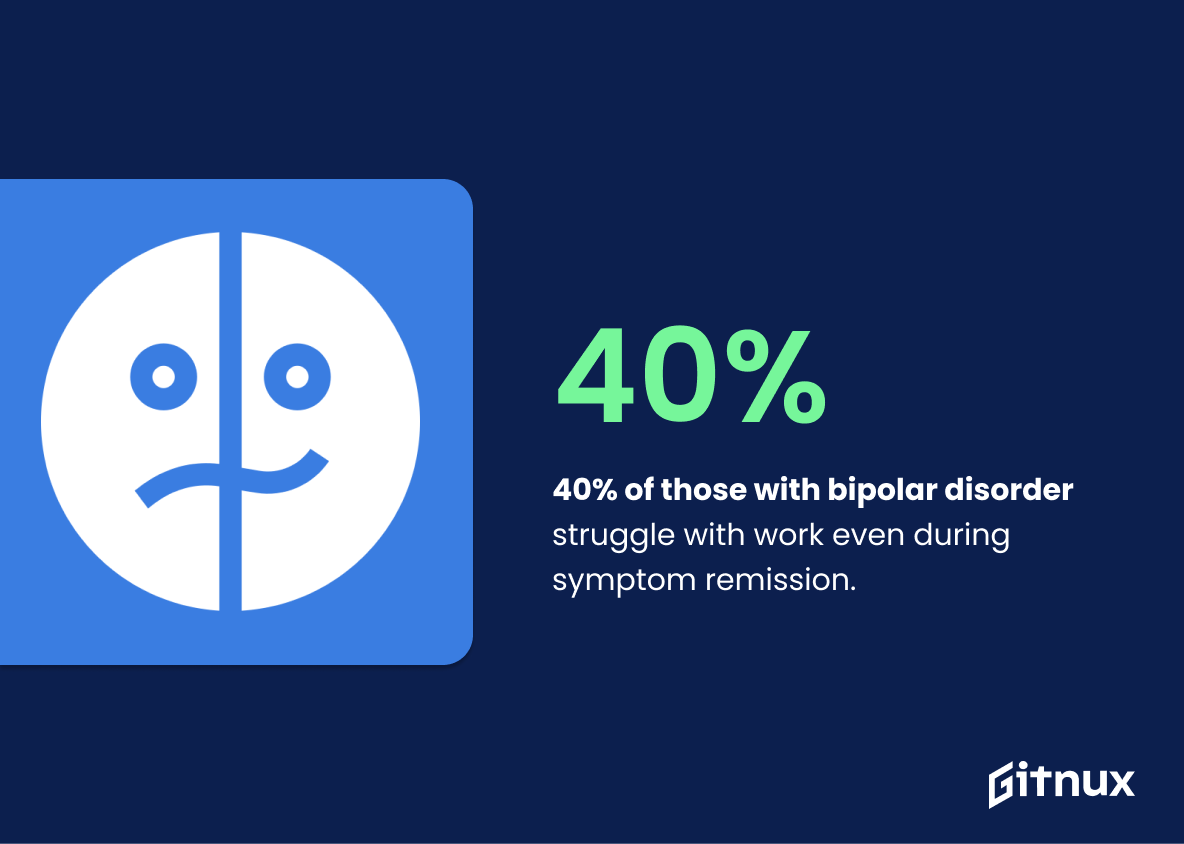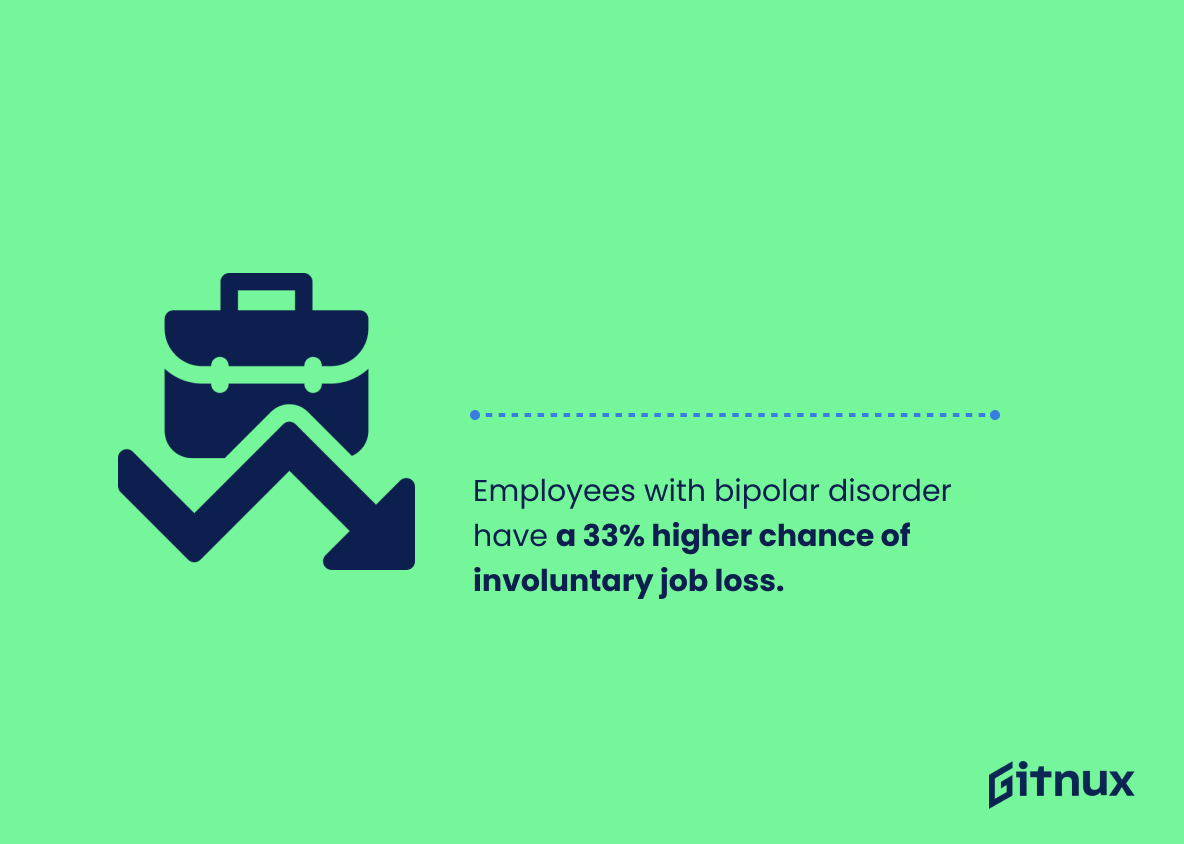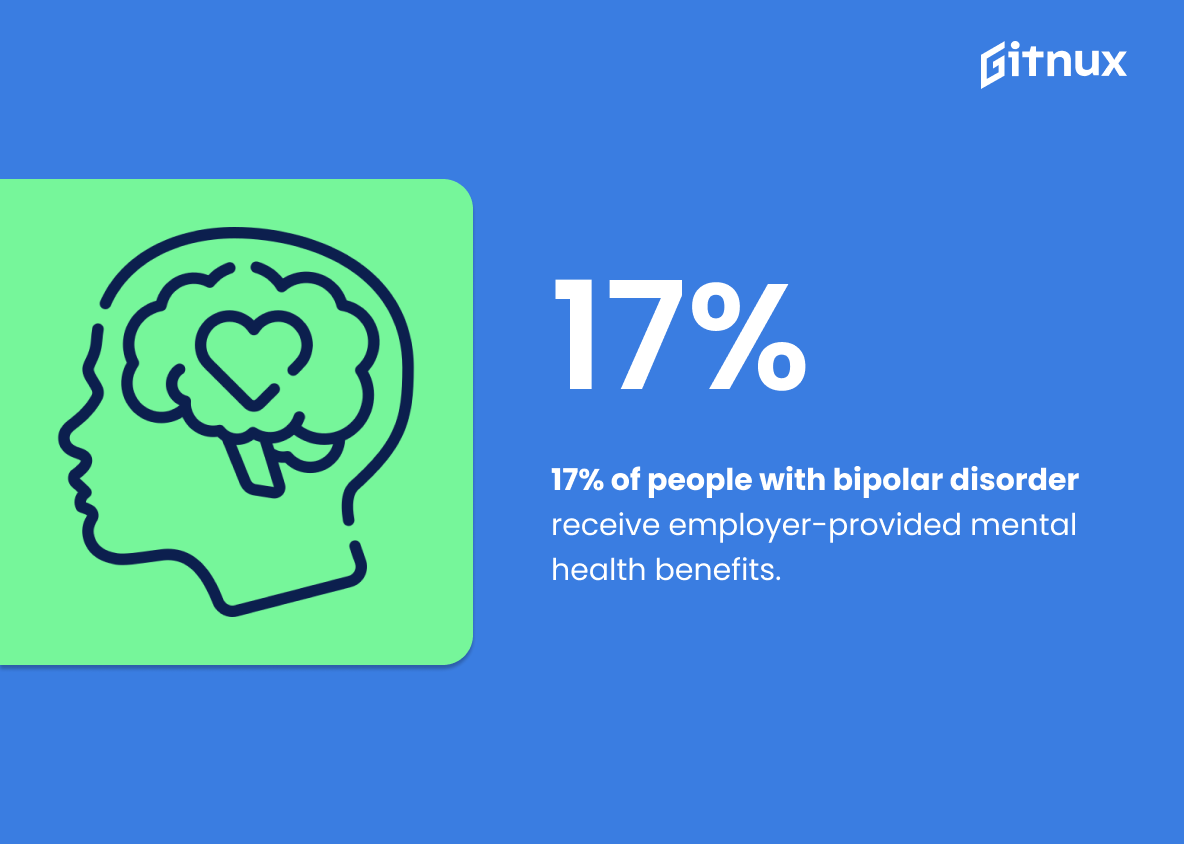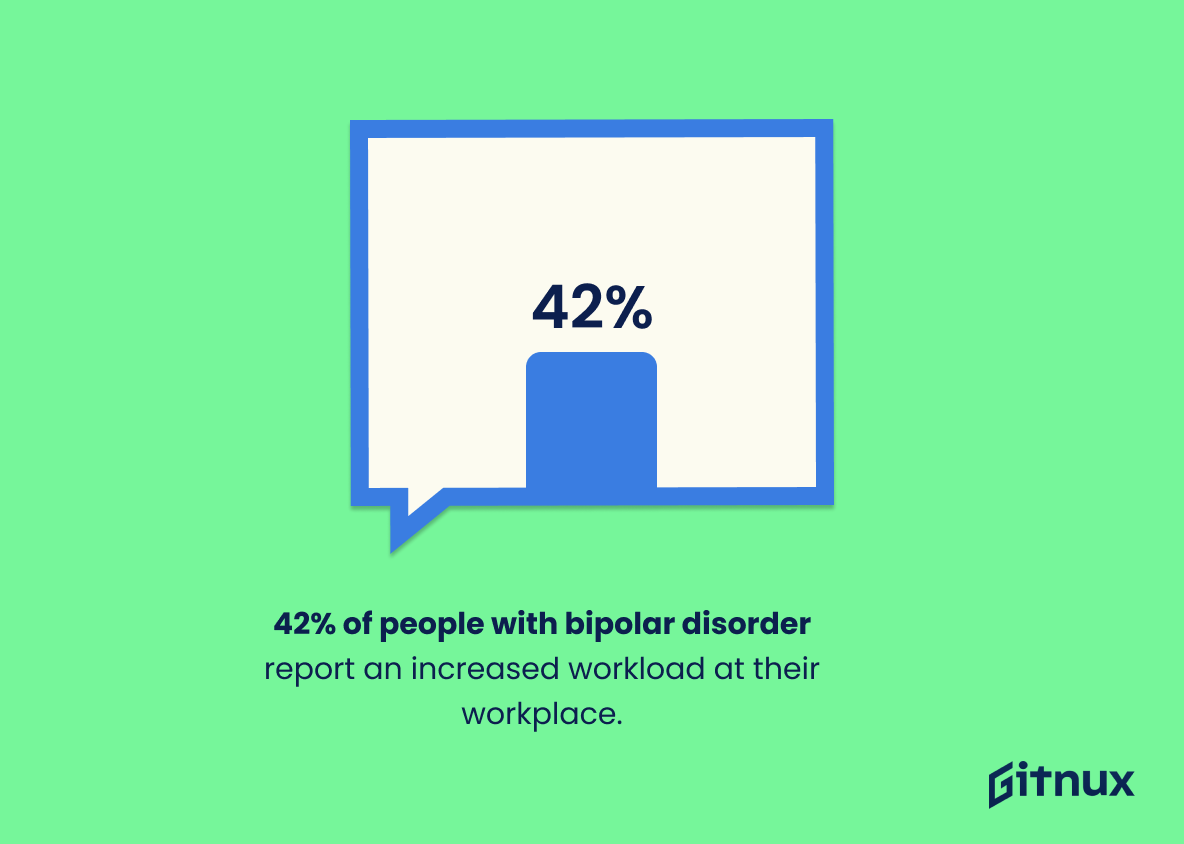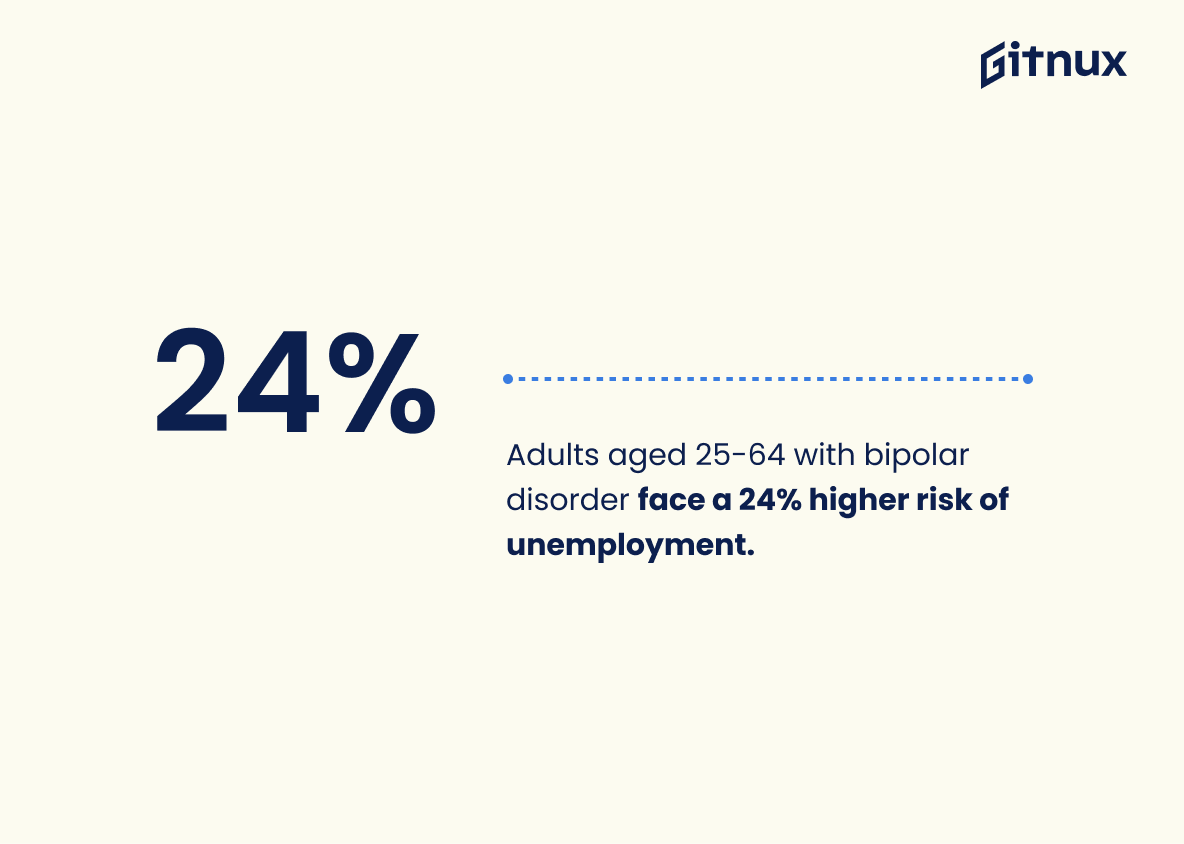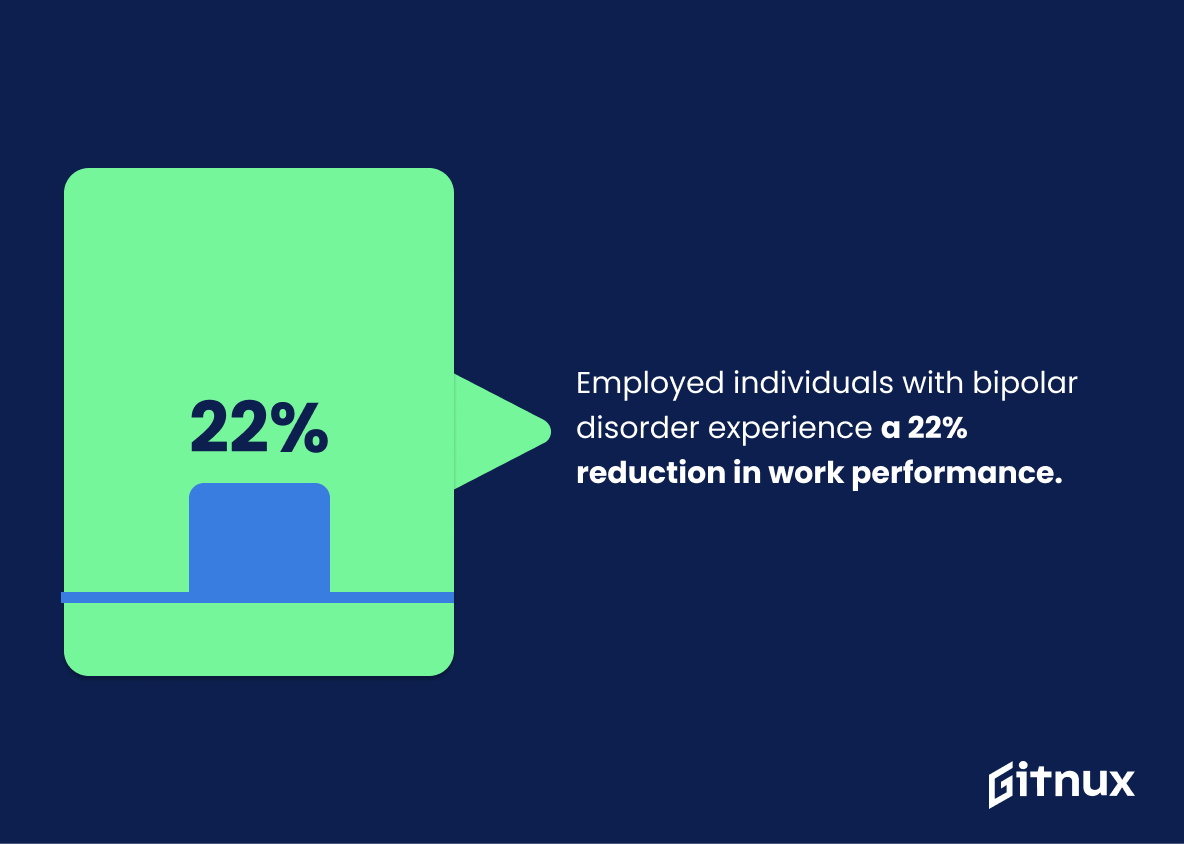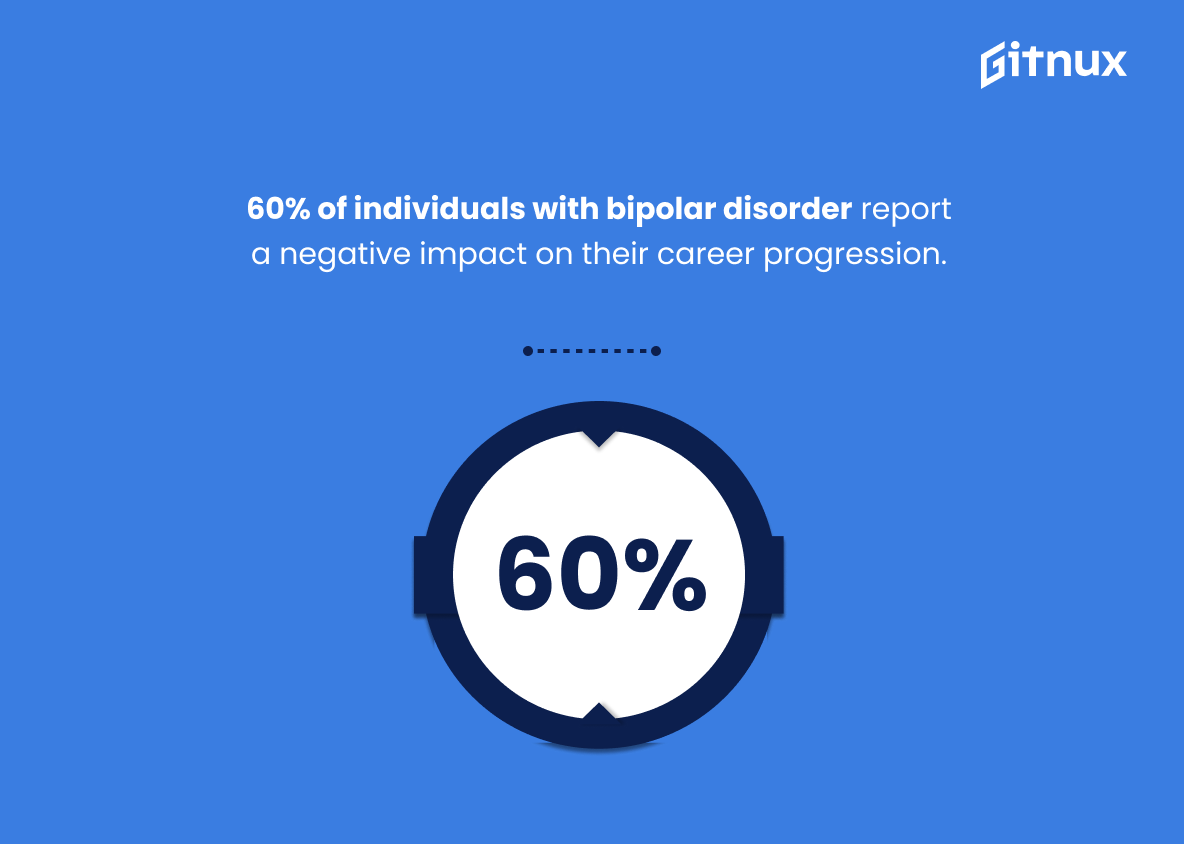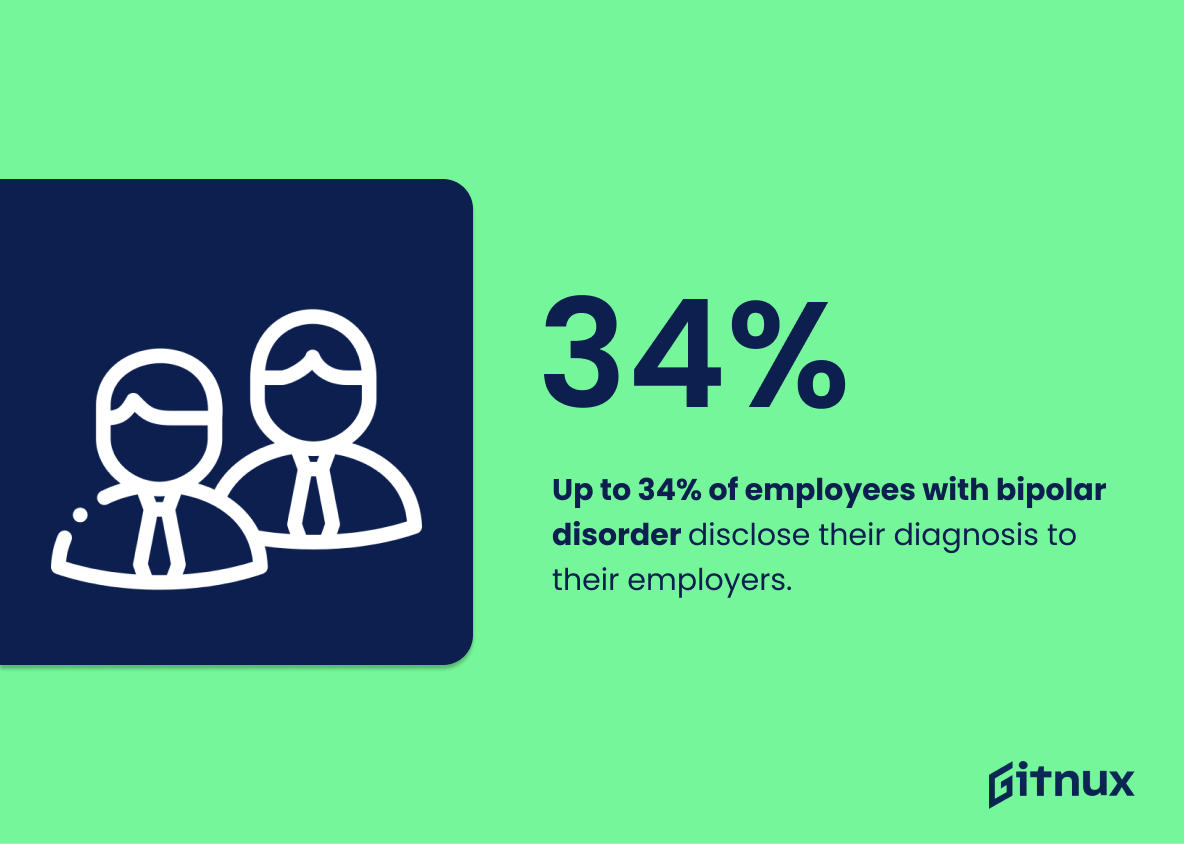Bipolar disorder is a serious mental health condition that can have significant impacts on an individual’s ability to work and maintain employment. This blog post will explore the current statistics surrounding bipolar disorder in the workplace, including how it affects job performance, absenteeism, involuntary job loss, stigma in the workplace and more.
We’ll also look at how individuals with bipolar disorder are faring compared to those without this diagnosis when it comes to education level and income levels. Finally we’ll discuss what employers can do to better support employees living with bipolar disorder so they may be successful both professionally and personally.
This statistic is a powerful reminder of the impact that bipolar disorder can have on an individual’s ability to work. It highlights the need for employers to be aware of the challenges that those with bipolar disorder may face in the workplace, and to provide the necessary support and resources to ensure that they can succeed.
Individuals with bipolar disorder miss an average of 28 workdays per year.
This statistic is a powerful indicator of the impact of bipolar disorder on the workplace. It highlights the fact that individuals with bipolar disorder are often unable to work for extended periods of time, resulting in a significant loss of productivity and income. This statistic is an important reminder of the need for employers to be aware of the challenges faced by those with bipolar disorder and to provide appropriate support and accommodations.
Bipolar Disorder Employment Statistics Overview
40% of individuals with bipolar disorder have poor work functioning even during periods of symptomatic remission.
This statistic is a stark reminder of the challenges faced by individuals with bipolar disorder in the workplace. Even when symptoms are in remission, 40% of individuals with bipolar disorder still struggle to maintain their work functioning. This statistic highlights the need for employers to be aware of the difficulties that individuals with bipolar disorder may face in the workplace and to provide the necessary support and accommodations to ensure their success.
Individuals with bipolar disorder whose conditions are managed have a 14% improvement in their work performance compared to those with unmanaged bipolar disorder.
This statistic is a powerful reminder of the importance of managing bipolar disorder in order to improve work performance. It highlights the fact that with proper management, individuals with bipolar disorder can still be productive and successful in the workplace. This statistic is a testament to the fact that bipolar disorder does not have to be a barrier to success in the workplace.
Employees with bipolar disorder have a 33% higher chance of involuntary job loss.
This statistic is a stark reminder of the challenges faced by those with bipolar disorder in the workplace. It highlights the need for employers to be aware of the potential risks associated with this condition and to take steps to ensure that those with bipolar disorder are not unfairly disadvantaged in the workplace. It also serves as a reminder of the importance of providing support and resources to those with bipolar disorder to help them succeed in their careers.
Only 21% of people with bipolar disorder feel that their employer provides adequate support for their mental health.
This statistic is a stark reminder of the lack of support that people with bipolar disorder receive from their employers. It highlights the need for employers to be more aware of the mental health needs of their employees and to provide adequate support for those with bipolar disorder. It also serves as a call to action for employers to take steps to ensure that their employees with bipolar disorder are provided with the necessary resources and support to help them succeed in the workplace.
Workers with bipolar disorder have an average annual income of $32,000, which is 70% of the general population’s income.
This statistic is a stark reminder of the financial burden that bipolar disorder can have on individuals. It highlights the fact that those with bipolar disorder are not able to earn the same amount of money as the general population, and that this can have a significant impact on their quality of life. It is a powerful illustration of the need for better support and resources for those with bipolar disorder, so that they can have the same opportunities as everyone else.
17% of people with bipolar disorder receive employer-provided mental health benefits.
This statistic is a powerful indicator of the current state of mental health support in the workplace. It reveals that a large portion of people with bipolar disorder are not receiving the necessary assistance from their employers to manage their condition. This highlights the need for employers to provide more comprehensive mental health benefits to their employees, so that those with bipolar disorder can receive the support they need to succeed in the workplace.
42% of people with bipolar disorder report an increased workload at their workplace.
This statistic is a powerful indicator of the impact of bipolar disorder on the workplace. It shows that, despite the challenges of managing the condition, many people with bipolar disorder are still able to work and contribute to their workplace. This statistic is a reminder that employers should be aware of the potential impact of bipolar disorder on their employees and should strive to create an environment that is supportive and accommodating of those with the condition.
People with bipolar disorder have a 24% increased likelihood of unemployment amongst adults aged 25-64.
This statistic is a stark reminder of the challenges faced by those with bipolar disorder when it comes to employment. It highlights the need for greater understanding and support for those with the condition, as well as the need for employers to be more open to hiring people with mental health issues.
Employed individuals with bipolar disorder experience a 22% reduction in work performance.
This statistic is a powerful indicator of the impact of bipolar disorder on work performance. It highlights the need for employers to be aware of the challenges faced by individuals with bipolar disorder and to provide the necessary support and resources to ensure that they can perform to the best of their abilities. This statistic is a reminder that bipolar disorder can have a significant impact on an individual’s ability to work, and that employers should be aware of this and take steps to ensure that their employees with bipolar disorder are supported in the workplace.
60% of individuals with bipolar disorder report a negative impact on their career progression.
This statistic is a stark reminder of the challenges faced by individuals with bipolar disorder in the workplace. It highlights the need for employers to be aware of the difficulties that those with bipolar disorder may face in their career progression, and to provide the necessary support and resources to ensure that they are able to reach their full potential.
Up to 34% of employees with bipolar disorder disclose their diagnosis to their employers.
This statistic is significant in the context of bipolar disorder employment statistics because it provides insight into the level of comfort and trust that employees with bipolar disorder have in their employers. It suggests that a significant portion of employees with bipolar disorder feel safe and supported enough to disclose their diagnosis, which is a positive sign for the workplace environment.
Conclusion
The statistics presented in this blog post demonstrate the significant impact that bipolar disorder can have on an individual’s employment. Approximately 83% of people with bipolar disorder experience a significant workplace impairment, and individuals with bipolar disorder miss an average of 28 workdays per year. Even during periods of symptomatic remission, 40% of individuals with bipolar disorder still have poor work functioning. Only 40% are employed overall, and those whose conditions are managed only see a 14% improvement in their work performance compared to those without management plans for their condition. Employees with bipolar disorder also face higher chances (33%) of involuntary job loss as well as increased stigma (65%).
Furthermore, only 21% feel that employers provide adequate support for mental health issues while 17% receive employer-provided benefits related to mental health care – both figures being far lower than desired or expected levels given the prevalence and severity associated with these disorders. Additionally, workers affected by this illness earn 70%, on average $32000 annually which is significantly less than what other members within the general population make; they also report 42 % more workloads at workplaces alongwith 24 % reduction in performances due to Bipolar Disorder subtype I having lowest employment rate among all i.e 29%.
Moreover 34 percent disclose about their diagnosis whereas 7 times more likely to suffer from presenteeism due to lost productivity . All these facts point towards need for better understanding , awareness & acceptance regarding such illnesses so that employees suffering from them could be provided necessary help & resources required leading towards improved quality life & career progression opportunities .
References
0. – https://www.health.harvard.edu
1. – https://www.tandfonline.com
2. – https://www.adaa.org
3. – https://www.nationalelfservice.net
4. – https://www.pubmed.ncbi.nlm.nih.gov
5. – https://www.jhsph.edu
6. – https://www.ncbi.nlm.nih.gov
7. – https://www.cambridge.org
